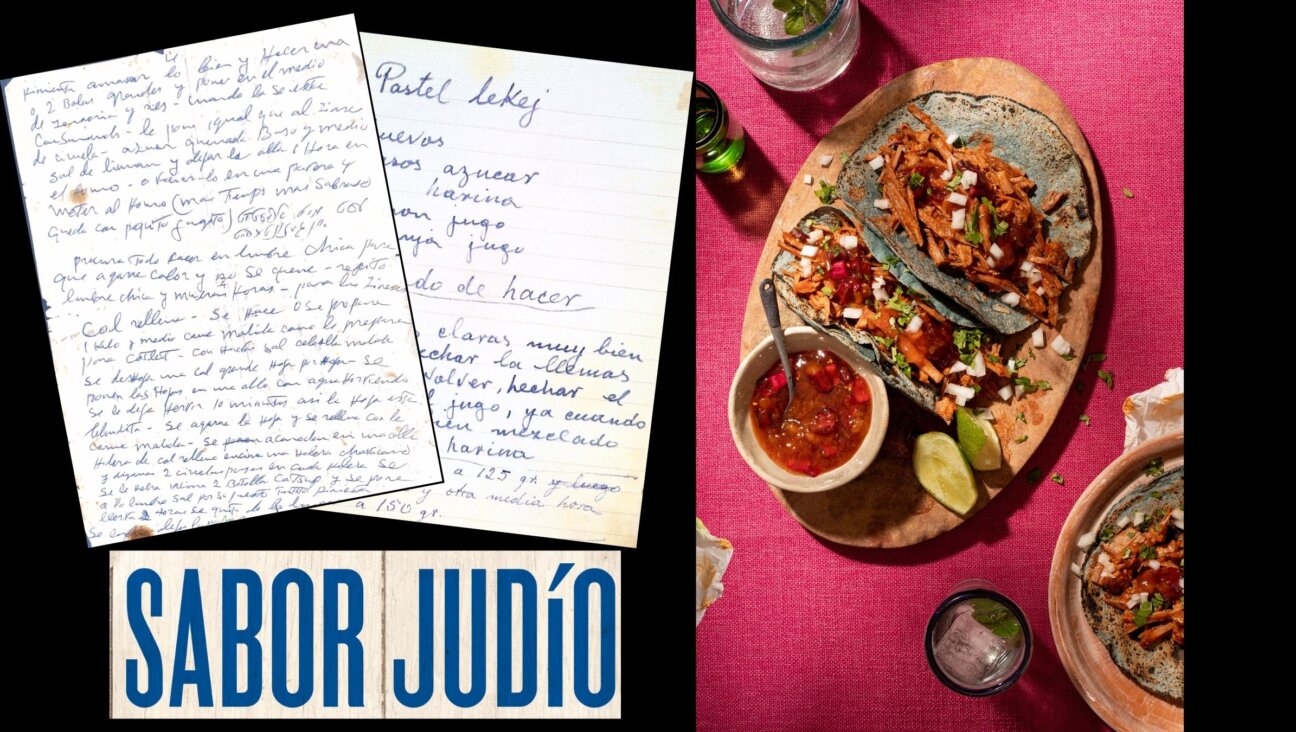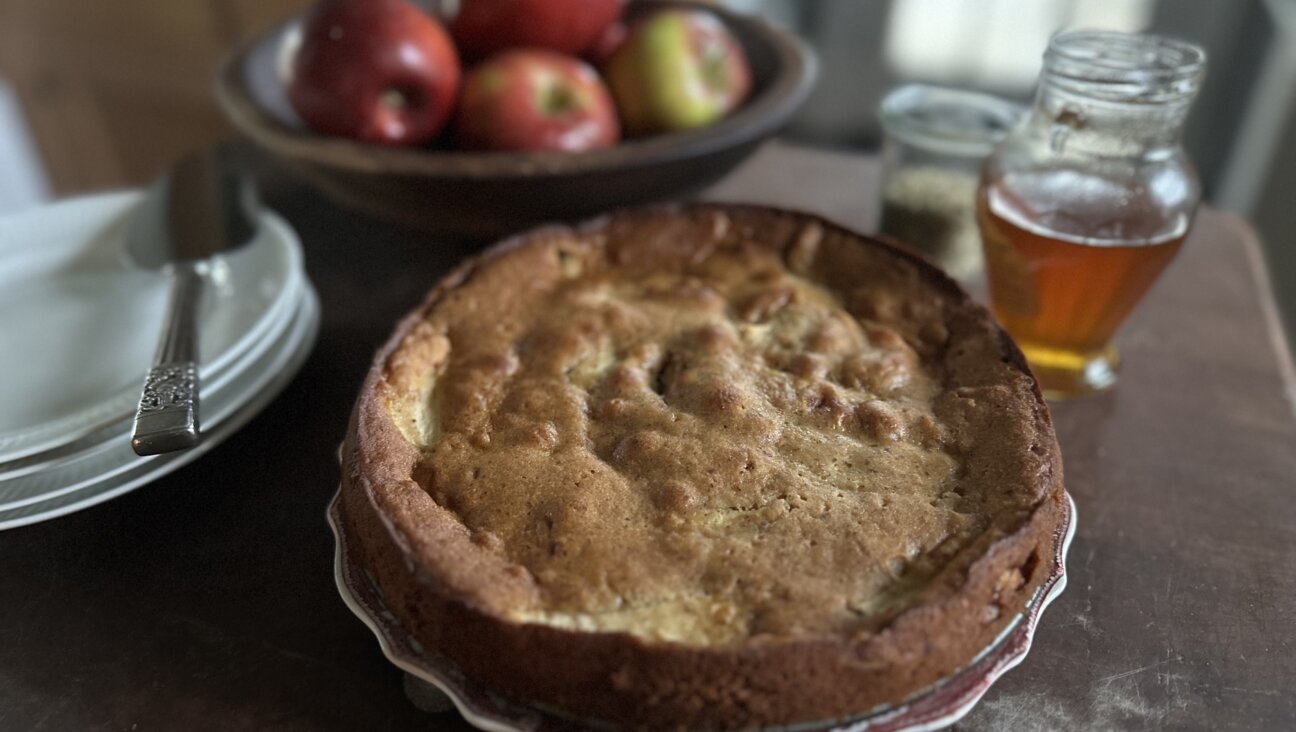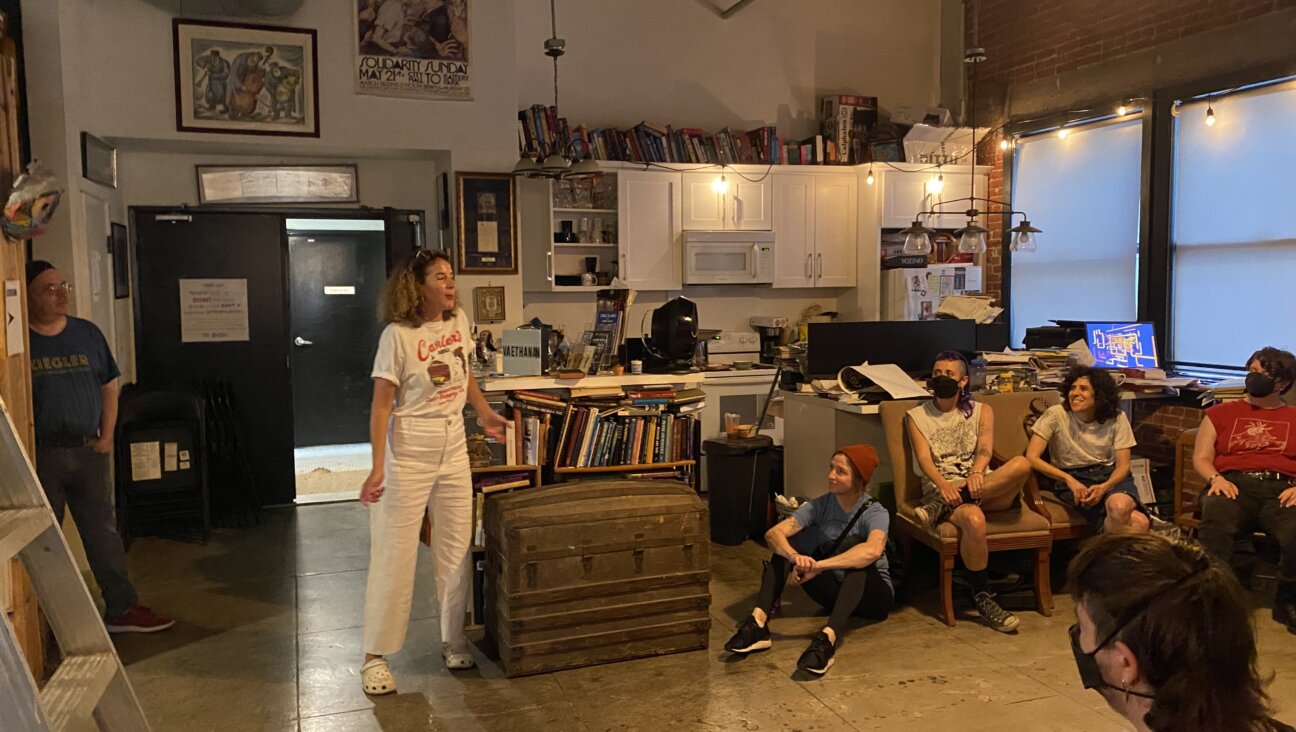Revisiting ‘A Treasure For My Daughter’

A Canadian classic, now in its 14th printing, offers basic information about Judaism, along with .
What do you do when you’re stranded on a desert island and one day you remember you’re Jewish? It’s been so long since you observed anything Jewish that you have only a vague idea how to organize, or re-organize, your household around the Jewish calendar, let alone being responsible for preparing meals for every festive occasion. There’s no one around who can tell you when (or if) to light candles and recite the appropriate blessing … you need help!
What you do is order a copy of “A Treasure for My Daughter: A Handbook for the Jewish Home” (2013), now in its 14th printing. Much more than a cookbook (although it’s that, too), it is, as my 1965 version states, “An Invaluable Guide to Jewish Festivals, Traditions and Holidays with Menus and Recipes.” (Yes, I was the stranded one, on a back-country farm, miles from any Jewish community.)
There is a wealth of information here on the meaning of all the important life-cycle events, the mezuzah and the kosher laws, with an emphasis on the principles behind them and their intended promotion of traditional Jewish values. All this is delivered in a down home, if somewhat corny, format of a mother instructing her daughter, the aptly named and recently betrothed, Hadassah: “You promised to tell me of the significance of the Mezuzah,” Hadassah says to her mother. “Yes, Hadassah, the Mezuzah is a piece of parchment bearing a text from the Bible…” and so on.
This way of handling the material, though, achieves its purpose: to convey, in an informal setting and language, basic information about Judaism that daughters need when starting out on their own. It is not meant to take the place of more formal doctrine. The hefty section on prayers and blessings, well thumbed in my own copy, includes the original Hebrew as well as a transliteration and English translation. A helpful Index guides you to appropriate prayers and blessings for the occasion, from all of those associated with the Sabbath (what to say when separating challah from dough, for instance) to the Mourner’s Kaddish.
Need to know the date of a holiday? Readers will find a 25-year calendar of Jewish Festivals at the back of the book. In its way this unpretentious book is an all-in-one short course on Judaism and traditional Jewish cookery. No wonder it never goes out of style. For despite the years that separate the original from the latest version, “Treasures” still holds its own as an invaluable resource, not only for the recently betrothed and young bride, but for people like me who strayed from the Jewish orbit and returned home. In recognition of modern Jewish practice, in the new version there are suggestions for gender-neutral or inclusive translations of prayers and blessings, and there is an added section on Simchat Habat and Bat Mitzvah.
The cookery section, though, remains unapologetically untouched. Do not expect a cutting edge style here. Part of the charm of “Treasures” is that these recipes are unchanged and reflect the way your mother or grandmother cooked for the holidays and everyday, a mix of American and Old World (i.e., Ashkenazi) cuisine of the period, represented by kugels, tzimmes, chopped liver and all the other “k” soul foods like kichel, knadlech, knishes, and kreplach in all their glory, as well as all-American and Canadian Corn Flakes macaroons, ski jumpers (filled cookies), and classic cole slaw.
The members of the Ethel Epstein Ein Chapter of Montreal Hadassah-WIZO, responsible for producing “Treasures,” lived in momentous times, through the terrible years of the Holocaust as well as the euphoria surrounding the establishment of the State of Israel. A spirit of undiluted Zionism infuses the chapter, “This is Hadassah,” a description of the Canadian organization’s origins, its federation with the Woman’s International Zionist Organization (WIZO), and the scope of its work, which then included rescuing children from Europe and helping to reestablish them in Israel.
I was sorry to see that the updated version of this chapter, reflecting the current scope of Canadian Hadassah-WIZ0’s laudatory work, replaced the original chapter entirely, including Bessie Batist’s take on Zionism, so fresh and unreserved. Today, we take for granted the miraculous rebirth in Israel of Hebrew as the language of every day, as well as the development of Israeli literature, the arts, sciences and institutions like the Hebrew University. For Bessie Batist, who conceived of “Treasures” and was its editor, this renaissance was thrilling to witness. She reminds us that “Zionism has made possible…a full Jewish life — a revival of a complete and ancient civilization,” a sentiment that needs re-telling, lest we forget.
There are no photographs in this book, splashy or otherwise, no illustrations of any sort. This is what gives “Treasures” its authenticity as a reference work, one that has filled an obvious need for decades. Ever since its original printing in 1950, generations of Canadian Jewish mothers have handed this book down to their daughters from generation to generation, very much in the Jewish tradition of l’dor v’dor, the passing on of traditions to keep them alive. I hope “Treasures” from Canadian Hadassah-WIZO will become an American tradition, too, and for many years to come.
Check out selected recipes from the cookbook “A Treasure For My Daughter” here.
“A Treasure For My Daughter” is available at www.Amazon.ca or by calling the Montreal office of Hadassah at 514-933-8461 or emailing [email protected].
Jo Ann Gardner lives in the Adirondacks where she and her husband maintain a small farm with extensive gardens. Her latest book is “Seeds of Transcendence: Understanding the Hebrew Bible Through Plants.” She can be reached via her website www.joanngardnerbooks.com
A message from our CEO & publisher Rachel Fishman Feddersen

I hope you appreciated this article. Before you go, I’d like to ask you to please support the Forward’s award-winning, nonprofit journalism during this critical time.
At a time when other newsrooms are closing or cutting back, the Forward has removed its paywall and invested additional resources to report on the ground from Israel and around the U.S. on the impact of the war, rising antisemitism and polarized discourse.
Readers like you make it all possible. Support our work by becoming a Forward Member and connect with our journalism and your community.
— Rachel Fishman Feddersen, Publisher and CEO























